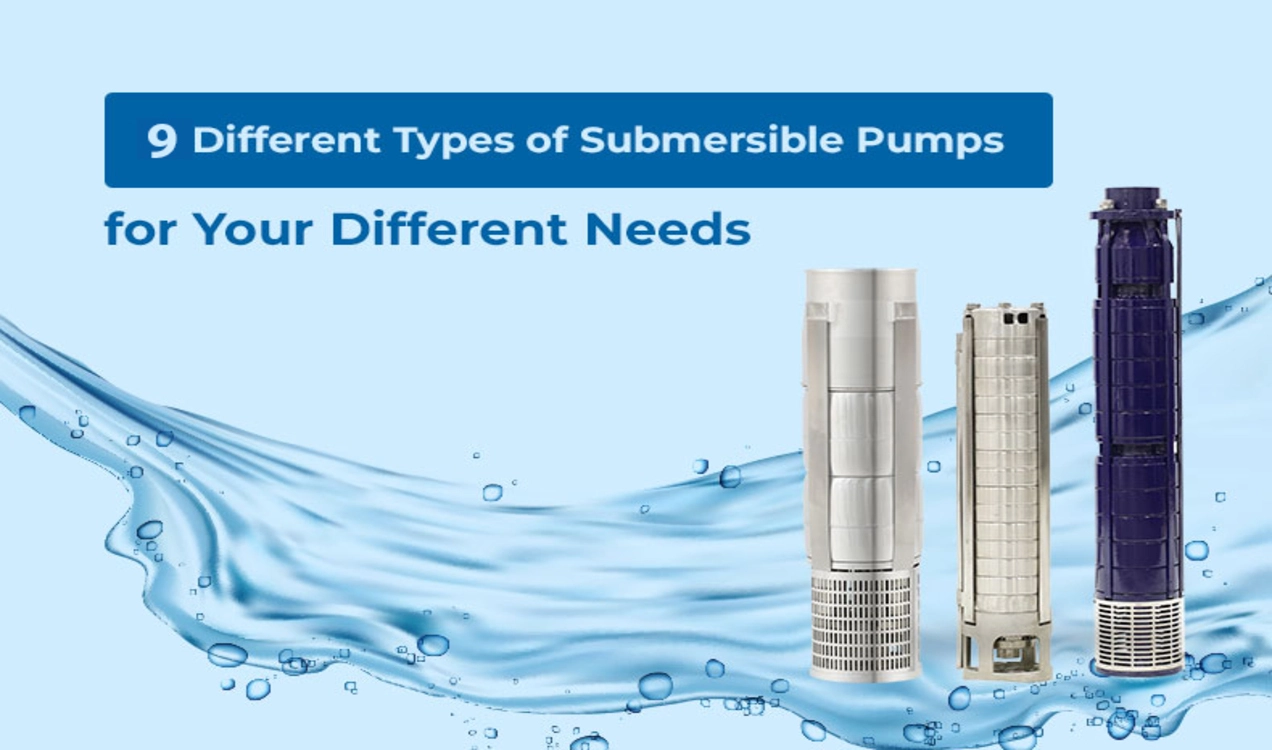One of the most effective types of pumps for draining rain runoff, handling sewage, or emptying a pond is the submersible pump. These pumps serve a wide range of purposes and are highly efficient in various applications.
These pumps are can operate entirely submerged in water. Submersible pumps are more expensive and complex than shallow well pumps, but are often well worth the investment.
Let’s take a quick look at the various types of submersible pumps.
What exactly is a Submersible Pumps?
It is a mechanical device that transforms a fluid underground from a low-pressure to a high-pressure environment.
This pump’s key advantage is that it prevents cavitation in the pump’s components. A submersible pump, unlike jet pumps, pushes fluid to the surface, creating a vacuum by relying on atmospheric pressure. As a result, submersible pumps outperform jet pumps in terms of efficiency.
Submersible pumps, which are lowered into the groundwater, have grown quite popular in recent years. These submersible pumps come in a variety of styles, each with its unique set of features.
Types of Submersible pumps
Bladder Pumps
Bladder pump systems can be used when there is a requirement for high integrity samples with low flow rates and peristaltic pumping is not an option.
A bladder pump system uses controlled air pressure to push samples to the surface, utilizing a submersible stainless steel pump along with a controller and compressor positioned at the wellhead.
Furthermore, the submersible pump’s use of a disposable polyethylene bladder ensures that air and water do not interact. As a result, a sample of excellent integrity is guaranteed.
Grinder Pumps
These pumps are also known as wastewater drainage machines. They are ideal for managing unclean discharge. It can be used to treat wastewater from bathtubs, toilets, and washing machines in the home. You can connect sewage pumps to holding tanks in residences via pipelines.
The pump will activate when the wastewater in the tank reaches a certain stage, grind the waste into an effective resolution, and then pump it into a central sewer system or septic tank. Large yards or basements can benefit from these pumps.
Deep Well Pumps
Deep well pumps are submersible pumps with a wide range of applications, including municipal applications. The body of these pumps can be attached to the motor to allow them to work underwater, and they are quite easy to maintain and repair.
The pump must be fully submerged when it starts operating. These pumps are typically used for transferring low-acidity fluids and other clean sources.
Borehole Submersible Pumps
Borehole pumps are submersible units designed to extract fluids or other materials from boreholes.
A borehole is a narrow shaft dug vertically into the ground for a variety of purposes, including extracting petroleum, or other types of natural gas from deep underground.
The borehole is created using a drilling equipment that makes the borehole to particular dimensions so that the borehole pump can fit through it closely with nearly no gaps on the sides.
These pumps are composed of corrosion-resistant substances since they come into direct touch with soil minerals. You can use borehole pumps in a variety of applications, including irrigation, construction, mining, and industry.
Dry Pit Submersible Pumps
Dry pit submersible pumps were created with the intention of being used in applications where the pump unit was submerged in liquid. Dry well stations with a distinct wet well and dry pump chamber are now using these submersible pumps. Dry pit submersible pumps have replaced the old centrifugal pumps.
Stainless Steel Submersible Pumps
Stainless steel pumps have a better appearance and function better than cast iron pumps. They are completely coated in stainless steel and have high acidic resistance as a result.
Its unique cast iron construction helps protect the source, such as a well, to a large extent, and allows for continuous clean flow. The pump’s entire body can be fully submerged during operation. It is typically used to handle moderately acidic and hot fluids.
Oil Filled Pumps
The oil cools the oil-filled submersible pump’s motor and immersion motors with oil are used in oil-filled pumps.
These pumps are widely applied in well extraction, agricultural distribution, residential use, industrial drainage, and hilly terrain. Motor cooling requires oil addition.
These submersible pumps are suitable for cold climates, as the oil remains stable and doesn’t freeze. They’re easy to install and maintain, and ideal for transferring clean content to lakes, pools, and rivers.
Submersible Utility Pumps
Highly flexible, the submersible utility pump handles multiple tasks such as draining liquid from basement floors, aquariums, waterbeds, and construction areas.
All you need to do is place the utility pump in the deepest part of the area that needs to be drained and turn it on.
This is an electric pump that can handle larger applications because of its capacity to stay submerged in water for a long period of time. This pump does not require any real installation and requires very little maintenance.
Booster Pumps
Used to improve weak flow in pipelines, booster pumps also assist in drawing from lakes, ponds, or tanks for home or commercial applications.
A home that doesn’t receive adequate pressure from the municipal supply will need a pump to boost the low flow. To deliver sufficient pressure to the upper floors of a hotel, a large commercial booster pump is required.
A booster pump is also used to re-pressurize and distribute water from a storage tank throughout a home.
You can also read this blog: Water Pump vs. Booster Pump – A Comprehensive Guide
Wrapping up!
So far, we’ve covered 9 different types of submersible pumps, with extensive information on every different pump. Each submersible pump has its own set of features and utility for specific applications.
The sort of pump you select will be determined by your specific needs. You can reach out to us at Unnati Pumps for further information, and we’ll be pleased to assist you!


